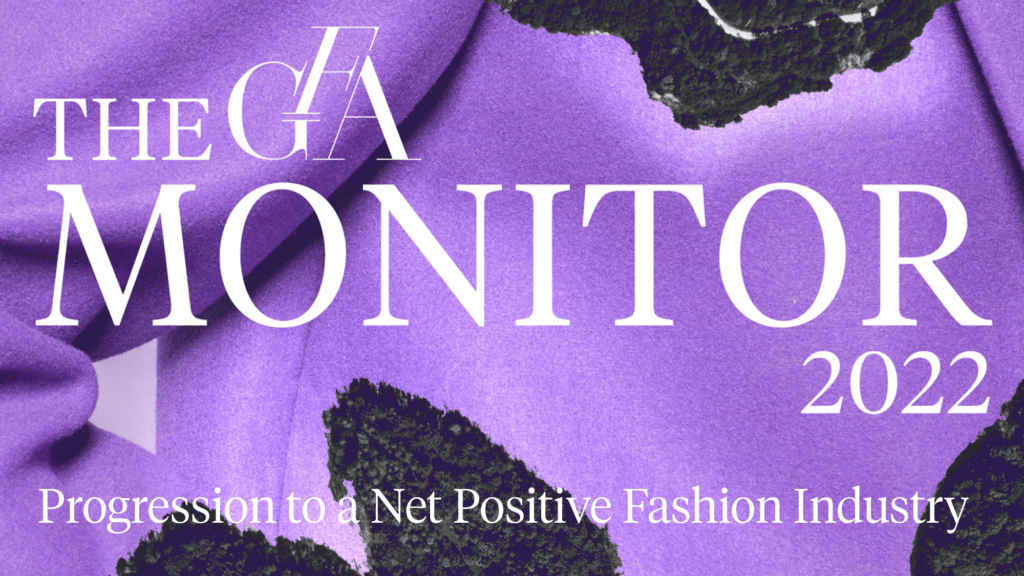
Articles
Note: This article predates our launch as Worldly.
The fashion industry is under pressure to show rapid and meaningful progress on climate and social impact. While businesses have been making bolder and clearer commitments – across everything from carbon emissions to fair wages – too often their goals and criteria are unique to individual companies, or focus on siloed areas of action. Driving fashion industry sustainability is a key component of Higg’s work.
Fortunately, many in the industry are setting targets looking towards 2030, driven by COP26 and the need to quickly reduce emissions. The work, however, is still fragmented and reporting is disparate – it’s challenging to know whether meaningful progress is being made, let alone the current state of impact.
To that end, Global Fashion Agenda (GFA) has selected Higg as its strategic data partner to help accelerate the transition to a net positive fashion industry. We are providing the data in The GFA Monitor, an annual report that outlines the priorities and opportunities brands and retailers have to set fact-based fashion industry sustainability strategies and actions to meet the goals set forth by our industry.

In our role as the strategic data partner for GFA, Higg will provide ongoing, reliable, science-backed impact data to The GFA Monitor to track progress, identify areas for our industry to improve, and accelerate progress towards a net positive fashion industry. In addition to providing one source for normalized and contextualized insight into industry-wide trends, we hope this report will help individual businesses know where they stand in relation to their peers and the industry and encourage them to keep pace with the progress we’re seeing.
The recently released report uses Higg Brand and Retail Module (BRM) data to help measure the industry’s current performance across five priorities: Respectful and Secure Work Environments, Better Wage Systems, Resource Stewardship, Smart Material Choices, and Circular Systems. The Higg BRM reports on social and environmental impact across a wide range of business operations, from packaging and transportation of goods, to the environmental impact of stores and offices. For this year’s report, our team aggregated and anonymized this performance data from hundreds of brands and retailers, providing unparalleled visibility into the fashion industry’s current state. Here are some of the highlights:
The goals are set and the data is clear – it’s time to start coming together to advance across these key impact areas. It’s promising that the majority of brands are tracking worker rights, investing in emissions reduction, and working to integrate environmentally preferred materials in their products. Yet we also see opportunities for the industry to invest in and improve upon, particularly in how businesses can better integrate sustainability into their purchasing decisions, increase the number of products made with materials that can be recycled when they are sold, and accelerate take back and product repair programs. Readers can find a full review of the areas business should focus first on Page 2 of the report to improve fashion industry sustainability.
Several impact partners also joined Higg in providing information for The GFA Monitor, such as the Apparel Impact Institute and Social Labor Convergence Program, whom we’ve worked with to build assessments and data integrations that keep the industry operating out of a unified dataset. Other impact partners providing expertise included Ellen MacArthur Foundation, Fair Labor, and Textile Exchange Just as this report brings together multiple data streams, we’re also looking forward to opportunities to connect our customers with this data, helping businesses manage sustainability using supporting data from multiple industry experts.
We’re proud to be partnering with GFA and its impact partners on such an ambitious initiative. The consumer goods industry is looking to apparel and footwear to lead the way in responsible sourcing, resource efficiency, clean energy, and workers’ rights, given its long history working to address change collectively in complex, outsourced supply chains. As we help the fashion industry move beyond measurement to management, consistent comparable data and harmonized regulation will be essential to affecting change.
Setting a clear baseline and highlighting opportunities for interventions now are just the first steps towards helping the fashion industry progress. We look forward to providing additional data across other trends and impact categories at future moments. Download The GFA Monitor here. If you’re curious about using the Higg BRM to create a baseline and improve your own fashion industry sustainability programs, reach out to our team.
© 2025 Worldly. All Rights Reserved